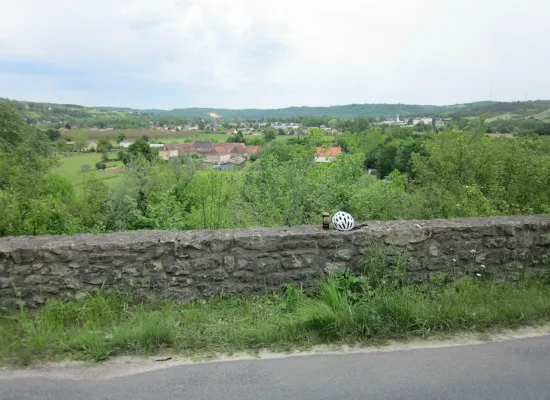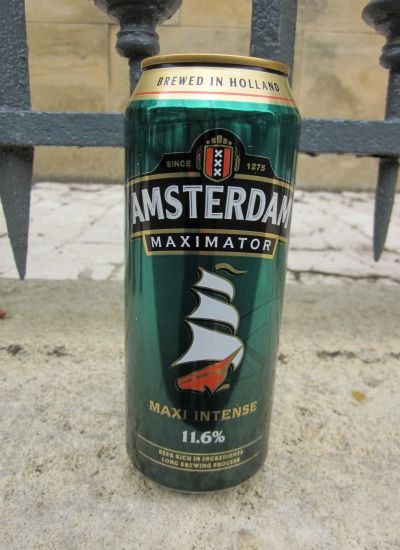Free Beer in the Dordogne Valley: Come and Find It!
These beers should last for several hot summers and cold winters. Where exactly are they hidden? Here are the directions
/https://tf-cmsv2-smithsonianmag-media.s3.amazonaws.com/filer/20120518115030Beer_in_RockSMALL.jpg)
I leave behind me a trail of beers.
No, I’m not littering. Rather, I’m leaving behind artifacts—and they’re full of lager. Why shouldn’t I? Almost everyone who has come and gone from this region, in the hills of southern France, has left their mark. Prehistoric people painted buffaloes and bears and such on cave walls. Later in time, people built cathedrals and castles which still stand today in nearly every town and on nearly every hilltop. Vintners dug their own caves and stashed vintage after vintage of the world’s finest wines.
And so, in a land so buried with layers of history, I shoved two beers several days ago into a hole in the base of a stone wall, beside the cemetery, in the village of Groléjac, near Sarlat-la-Caneda. These were strong beers, of 8-plus percent alcohol, which should preserve them for several hot summers and cold winters—and whether next month, or next year, or in a century, I hope that someone visits this site and has a beer—on me. (You might take one and leave the other for posterity, though that’s just a gentle suggestion.)
So where exactly are these hidden beers? Here are the directions: Take highway D-50 west from Saint-Julien-de-Lampon. The Dordogne River will be at your right as you wind through the hills and the dark woods. You will pass through Sainte Mondane after three kilometers and, after several more, you will enter Groléjac. You will see a walnut orchard on your right, a cemetery on your left. You are there. Now pull over and notice that, along the base of the wall beneath the cemetery lawn where it reaches the road level, there are cobblestone-sized holes. Use the photo above to guide you, and you should have no trouble finding the right nook. In one of them are two strong lagers. If you find them, send me an email (I’ve left my card affixed to each can), and I’ll pass on the word. You might even continue the game and take the beers to a new place. Email me a description of where one may find them next, and I’ll notify readers.
I hid another beer yesterday—also a strong lager in a can. It, too, I left in a stone wall, this one running along the south side of highway D-703 just a kilometer or so west of Le Bugue at a site overlooking the town itself, out in the sprawling green valley. Almost straight beneath the highway is the Vezere River, a tributary to the Dordogne. Note that the beer is hidden about 100 meters east of the white stucco 27 kilometer marker stone.

The Groléjac beers and the one stashed near Le Bugue are only the beginning of this game, for I intend to make a habit of hiding beers in strange places as I pedal from here (I’m now near Bergerac) to Bordeaux and then south into the Pyrenees and, finally, Spain. I concede: These aren’t beers of the highest quality, but it’s the game that’s worth playing; a beer in the grass, along the roadside in southern France, is just a little extra incentive.
Beer is not something for which the French are particularly known. Indeed, most of the strong lagers and ales found in local fancy foods stores are from Belgium and Holland. One Dutch brand, Amsterdam, makes a lager called Navigator, which seems appropriate for a traveler to enjoy. The beer is strong—about 8.5 percent alcohol by volume. But Amsterdam’s biggest gun is–and how cool is this?—the Maximator, a wine-strength lager that comes in a half-liter can. I discovered this beer years ago, during another bike ride through France, and drank a can of it with my father and a friend named Rudi in the grass by a small highway, as we looked out upon a distant castle, or a flock of sheep, or some crumbling stone buildings, or some peasants slogging manure. I really don’t remember, but it was classic French. Anyway, upon standing to go, my dad momentarily staggered under the influence of the beer as he put on his helmet. And so we’ve joked for years about the time near Conques that my dad got “maximated.” (Just four days ago, one of our party, a fellow named Milton, drank an entire Maximator in a sitting. He was a bit wobbly on the ride home, and we exhumed the old maximator joke. It never gets old.)
But the French do brew. Their beers are often labeled as “artisanale” and corked into 750-milliliter Champagne-style bottles. The majority of these are low alcohol—5 or 6 percent by volume—which is fine, but these thirst-quenchers wouldn’t last a summer stashed in a stone wall in the South of France. Nonetheless, beer is here, most of it in supermarket aisles, some available direct from roadside breweries, and a few cans for free—if, that is, you shove your hands into the right holes.
You may not want the beer, but the Périgord is one of the loveliest parts of the world, and anyone should go—even if it’s only for the wine.

/https://tf-cmsv2-smithsonianmag-media.s3.amazonaws.com/accounts/headshot/Off-Road-alastair-bland-240.jpg)
/https://tf-cmsv2-smithsonianmag-media.s3.amazonaws.com/accounts/headshot/Off-Road-alastair-bland-240.jpg)